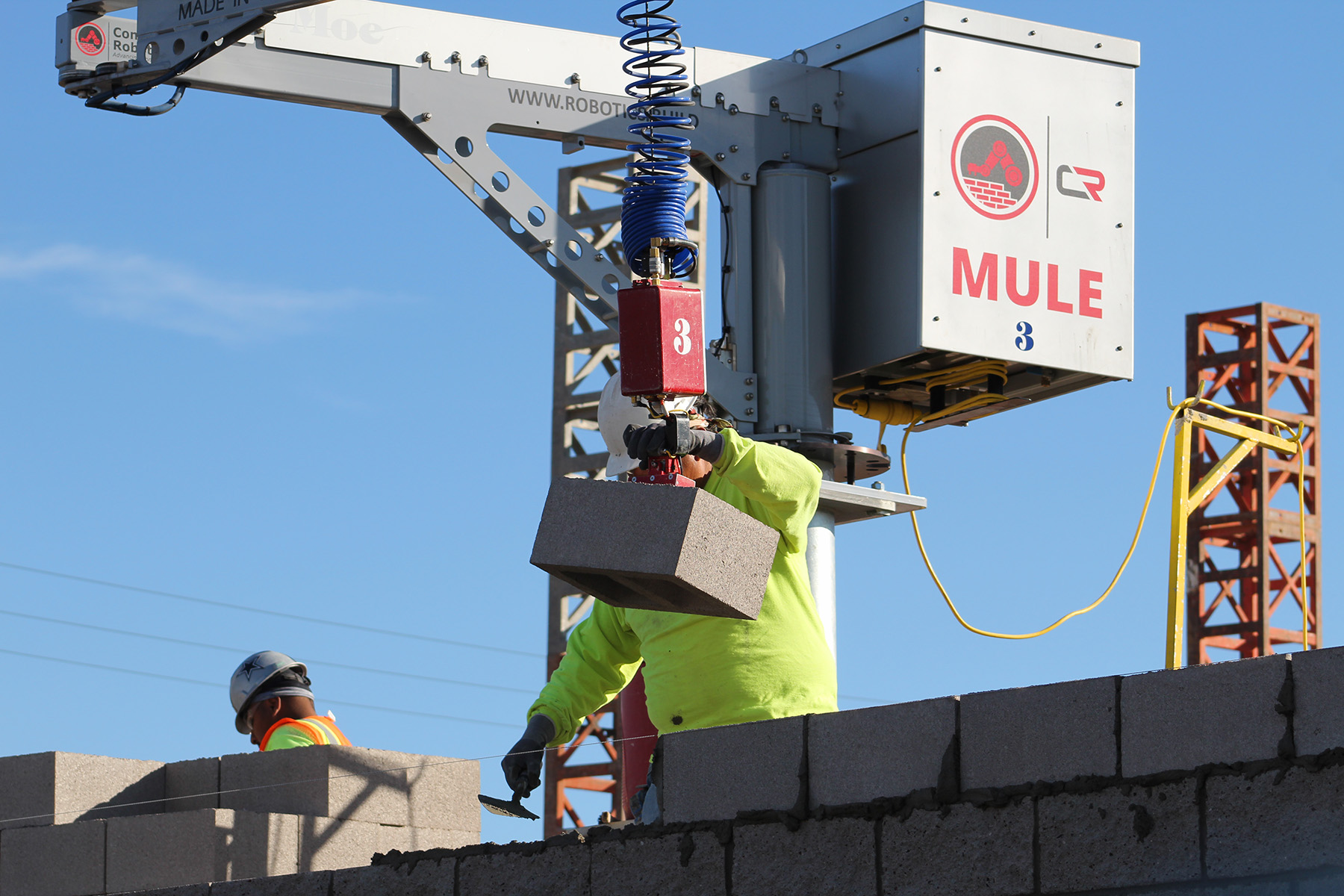By Kayt Sukel
In films like Batteries Not Included and Wall-E, autonomous robots are able to save the day by reconstructing demolished apartment buildings or constructing trash skyscrapers. Today, many in the civil engineering community see a purpose for robots in construction beyond the silver screen.
They hope that advances in artificial intelligence and smart robotics can help them manage ongoing skilled labor shortages, as well as better protect the health and safety of human workers, especially as the pipeline of planned construction and infrastructure projects continues to rapidly grow.
Cynthia Brosque, Ph.D., an adjunct professor at Stanford University’s Center for Integrated Facility Engineering, who teaches a construction robotics course, said there are many potential applications for robotics in construction, and there are several already available on the market.

“Some have been really successful, like Dusty Robotics or Canvas,” Brosque said, referencing companies that offer automated construction site layout and drywall finishing, respectively.
“But a lot of the robots we see today are focused on how to show progress — so they are basically surveillance technology,” according to Brosque.
“It could be drone based or it could be four-legged robots ... (but) they’re basically tracking progress. So they’re not engaging directly, like physically touching materials or doing a task, but they have general awareness to be able to capture progress, fit (the data) into reports, and do that in a really nice and consistent way,” she explained.
The surveillance technology application is exactly what Eric Wetzel, Ph.D., director of the Construction Automation, Robotics & Visualization Laboratory at Auburn University, works on.
His team developed “Mac,” the four-legged Boston Dynamics Spot robot, which uses sensors, cameras, and lidar to explore construction sites and collect data to more easily complete construction documentation.
Many people, when they hear the term “construction robot,” immediately imagine a humanoid robot “doing things completely on its own without the need for any human intervention,” according to Wetzel. But other types of robots can also provide tangible benefits.
“When you think about all the data that is generated on a construction site, it’s immense,” Wetzel explained. “That data is used for updates to the schedule. It’s used for pay app generation. It’s used for mediation, arbitration, or litigation if projects go south. And it’s important that the record of how a project was put together is holistic and comprehensive.”
Robots like Mac can autonomously collect that data, even venturing into areas of a site that may not be safe for human workers, to keep that record accurate and up to date. And, by doing that kind of work, the robot allows construction engineers and others on-site to focus their efforts on more demanding tasks than data collection and data entry.
Now and in the future
Scott Peters, president and cofounder of Construction Robotics, said that construction as an industry has historically been slow to adopt more advanced technologies. His company offers the MULE (material unit lift enhancer), a robotic lift system, to help make large and heavy materials “weightless.” The goal is to protect the health and safety of workers while also increasing productivity.
“It’s really a great stepping stone for the industry,” Peters said. “(This technology) is something that can be learned incredibly fast and can be operated without much technical support.”

Wetzel said these kinds of robots are a “viable way of executing very specific scopes of work.” But many hope that advances in AI will enhance what these task-specific robots can offer. For example, in the future, there could be algorithms that could help these robots work more autonomously or even collaborate with other robots, as well as construction stakeholders, to report percent completion or other important project data.
“There is an opportunity to interface things like large language models onto robots so you could (one day) have a natural language discussion with a robot,” Wetzel added.
For his part, Peters agrees that the addition of AI into robots’ hardware and other construction equipment may not offer autonomy or natural language discussions at this point, yet such algorithms can help construction robots make smarter decisions.
“Robots will be able to interact with workers a little bit smoother,” Peters said. They “will be able to understand the data ... and share insights (with construction teams) that will help (the robots) be more effective and efficient on jobsites.”
Prepping the workforce
According to Robotics & Automation News, the construction robot market is expected to beat predictions and grow by more than 15% per year in the next seven years. And as hardware and AI costs continue to decrease, there will likely be more widespread adoption. But as more companies look to robotics to solve some of their challenges, engineers need to think about how to best integrate robots into their plans.
Today, Brosque said, robotics could be introduced early in the construction process for activities like earth moving or solar panel farm construction. “When the site is completely empty, it’s much easier to then bring in robot solutions,” she said. Empty sites allow you to control the full environment. Once the site gets cluttered after a foundation is laid, things get a lot more complicated, Brosque explained.
Brosque’s research focuses on how people interact with construction robots. She noted that there is not a one-size-fits-all approach to integrating these technologies into jobsites at this point. What worked well on one project may not work on another, for reasons ranging from cost to design. To fully embrace construction robots, civil and construction engineers will need to find a way to determine where, when, and how construction robots make the most sense.
“Giving tools to managers and innovators in construction companies (so they can be) more consistent in the way they evaluate robotic pilot projects” will be important, she said. “How do you even evaluate not only traditional labor versus a robot, but also all the possibilities you have in between?”
Brosque added that another important aspect of planning will involve determining how to support robots at the construction site. “Some robots may require a different type of setup. Think about the battery. How do you recharge the robot? Does it need to be stored on your site, or maybe somewhere nearby and then transport it back and forth?
“How do you even get to the point of deployment? Maybe you don’t have a site elevator. Do you need a full scaffolding system just for the robot? Is it worth it?” Answers to these questions will be needed for the “successful evaluation of any new technology,” Brosque said.
Wetzel added that once the initial planning is complete, someone will be needed to handle the different robot applications.
“Somebody’s going to have to be responsible for that fleet, and they’re going to have to understand the operating systems and the models,” Wetzel said. “I don’t know that there’s anything that the 25-year superintendent veteran needs to do, but I do think large-scale and medium-scale companies might benefit from thinking about what that infrastructure might look like.”
Despite the challenges, Peters remains bullish on the potential of construction robots to solve a variety of problems. He believes that eventually AI will “creep” into most building tools and equipment — and construction will be the better for it. “It’s about finding the space where robots fit and then successfully implementing it by really planning and coordinating,” Peters said. “That’s where the opportunity is.”
Kayt Sukel is a science and technology writer based outside Houston.
This article first appeared in the November/December 2025 issue of Civil Engineering as “The Future of Construction.”



